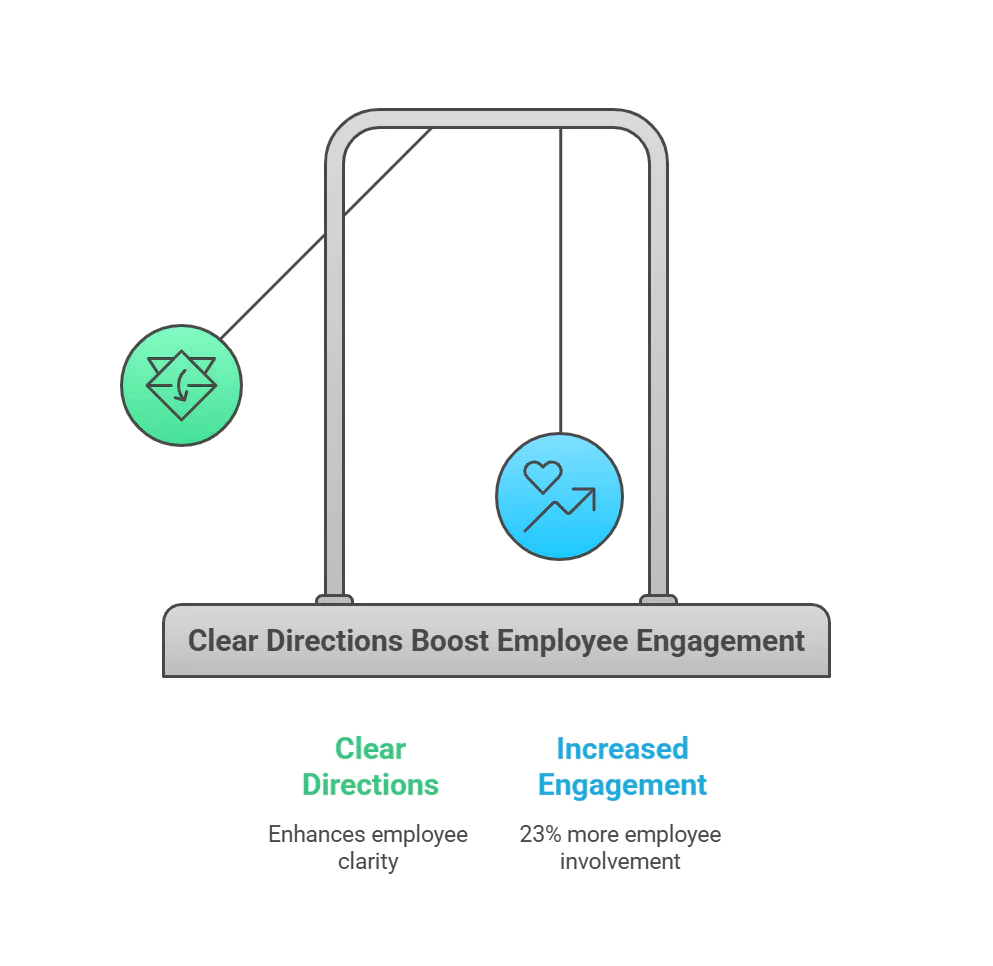Alright, let’s talk about something we all deal with: communicating with other people. Whether you’re just chatting with a friend, having one of those awkward heart-to-hearts with your partner, or sitting in a work meeting that feels more like a pressure cooker, expressing yourself clearly can feel like walking a tightrope. If you’ve ever found yourself saying, “Wait, that’s not what I meant!” or caught in a misunderstanding that spiraled out of control, trust me, you’re not alone.
Here’s the deal—clear thinking is the secret sauce behind every great conversation. It’s the thing that makes sure your words actually match what’s in your head and keeps things from going sideways.
You might be wondering, “What even is clear thinking, and why does it matter?” Well, buckle up, because we’re about to break down why clear thinking is the real MVP of communication and how you can use it to connect better, dodge misunderstandings, and get your point across without all the drama. Sound good? Let’s dive in.
Why Does Clear Thinking Matter in Communication?
You ever have one of those conversations where halfway through, you’re thinking, What are they even trying to say? Or worse, you’re the one talking, and you see that glazed-over look in someone’s eyes like, Nope, you lost me. Yeah, we’ve all been there. That’s why clear thinking is such a game-changer when it comes to communication. It’s like the secret sauce that makes everything click.

1. It Reduces Misunderstandings
When your thoughts are all over the place, your words follow suit. And when your words are messy, people don’t get what you’re saying—they guess. That’s where all those “Oh, I thought you meant this!” moments come from. It’s like giving someone directions to your house but forgetting to tell them what street you’re on. Cue confusion.
Here’s the kicker: Miscommunication happens way more than you’d think. A survey found that unclear communication causes 56% of workplace failures. That’s more than half! And let’s be honest, it’s not just at work—this stuff spills into our personal lives too. Ever have a text convo with your friend or partner go sideways because your message didn’t come out right? Same idea.

2. It Builds Trust
Think about the people you trust the most. Chances are, they’re the ones who know how to get their point across without making you feel like you’re decoding a riddle. Clear communication shows you’ve thought things through, and that confidence rubs off. People start thinking, Alright, this person knows what’s up.
This is a huge deal at work. Studies show that employees who feel like they’re getting clear directions are 23% more engaged. Why? Because clear thinking equals clear leadership. It’s basically saying, I’ve got this handled, and I’m bringing you along for the ride.

3. It Saves Time (and Sanity)
Let’s be real—time’s too precious to waste on figuring out what someone meant to say. When you’re not clear, people have to double back, ask questions, or worse, guess wrong and go in the complete opposite direction. It’s like trying to put together IKEA furniture without the manual—you’re just winging it and hoping for the best.
Clear thinking smooths out all that mess. It’s like handing someone a map with a giant YOU ARE HERE on it. No detours, no backtracking—just straight to the point. And honestly, who doesn’t appreciate that?
4. It Strengthens Emotional Connections
You know that feeling when someone just gets you? That’s the magic of clear communication. When your thoughts are all tangled up, it’s hard to explain how you feel, and the other person is left guessing. But when you’ve sorted out what’s in your head, it’s like opening a door. The other person doesn’t just hear you—they understand you.
This is a game-changer in relationships. Imagine the difference between saying, “I’m upset,” versus, “I feel upset because I thought we agreed on this, and now it feels like we’re not on the same page.” The first one’s a wall; the second one’s a bridge.
5. It Brings Focus to What Really Matters
Life’s already noisy enough—emails, texts, TikToks, ads, notifications—you name it. When someone takes the time to think clearly and communicate simply, it’s like a breath of fresh air. You’re not wasting energy trying to figure out what they’re saying; you’re just getting it.
Clear thinking isn’t just about being understood—it’s about respect. It’s saying, I care enough to make this easy for you.
6. It Amplifies Impact
When you’re clear, people don’t just hear what you’re saying—they remember it. Think about the best speeches or advice you’ve ever heard. They weren’t filled with fluff or overcomplicated ideas. They were straight-up powerful because they were simple and clear.
Take Martin Luther King Jr.’s “I Have a Dream” speech. Imagine if he’d rambled or overexplained. Would it have been as inspiring? Probably not. Clear thinking lets your words stick the landing every time.
Common Communication Struggles (and How Clear Thinking Helps)
Let’s talk about a few classic communication challenges and how clear thinking swoops in to save the day.
1. Talking in Circles
Ever start explaining something, only to realize halfway through that you’re not even sure where you’re going? It’s like taking a detour through every unnecessary detail. The result? The other person zones out or gets confused.
- Solution: Before speaking, pause and ask yourself, What’s the main point I want to get across? This helps you stick to the essentials and avoid verbal spaghetti.
2. Overreacting in the Moment
We’ve all been there: someone says something that rubs you the wrong way, and you fire back without thinking. Later, you might regret it, realizing you misunderstood their intent.
- Solution: Clear thinking helps you pause before reacting. Instead of snapping, take a deep breath and ask yourself, Am I interpreting this correctly? Sometimes, a split second of reflection can save you from a full-blown argument.
3. Getting Lost in Emotions
Emotions are great—they make us human! But when they take over, they can cloud our thoughts and derail conversations. For example, if you’re angry, you might say things you don’t mean, or if you’re anxious, you might hold back from saying what needs to be said.
- Solution: Clear thinking involves acknowledging your emotions without letting them control you. Try mentally labeling how you feel—“I’m frustrated” or “I’m nervous”—and then focus on what you want to communicate.
How to Cultivate Clear Thinking for Better Communication
You know that feeling when you’re trying to explain something, and halfway through, even you’re not sure what you’re saying? It’s like walking through fog—you’ve got a general direction, but you keep bumping into stuff. That’s what unclear thinking does to communication. The good news? Clear thinking isn’t something you’re born with—it’s a skill you can build, step by step. Let’s break it down.
Why Clear Thinking is the Key to Everything
Clear thinking is like the foundation of a house—if it’s shaky, everything built on top of it (your words, ideas, plans) wobbles too. Research even backs this up: The International Journal of Business Communication found that organizations with clear communication practices are 50% more effective at achieving their goals than those without.

And it’s not just for the workplace. Whether you’re giving advice to a friend, explaining a new idea to your boss, or hashing out an argument with your partner, clear thinking smooths out the bumps in the road.
How to Sharpen Your Thinking and Communicate Like a Pro
Alright, let’s get to the good stuff. Here are some practical ways to cultivate clear thinking, complete with some stats, analogies, and maybe a bit of tough love.

1. Pause and Untangle Your Thoughts
Think of your brain like a closet that needs Marie Kondo-ing. Before you open your mouth, take a second to sort through all the “stuff” up there. What’s important? What’s just noise?
A study by the American Psychological Association found that people who take just 10 seconds to pause before responding are 40% more likely to make sense to their audience. It’s a little moment of reflection, but it makes a huge difference.
For example:
- Instead of saying, “Ugh, the process is broken!”
- Try: “The process has too many steps, and it’s slowing us down. Can we simplify it?”
Clear thinking = clear problem-solving.
2. Get Rid of Mental Clutter
You wouldn’t pack for a trip by throwing your entire closet into a suitcase, right? So why overload your sentences with unnecessary stuff? Filler words (“basically,” “kind of,” “like”) and vague phrases (“it’s important to note”) just water down your message.
In fact, according to Grammarly, concise emails are 50% more likely to get a reply than wordy ones. That’s not just a workplace tip—it works everywhere. Whether you’re texting your friend or pitching an idea, less is usually more.
3. Break It Down Like a Pro
Complicated ideas are scary. They make people zone out faster than a bad movie. Clear thinkers know how to simplify things. Think of it like explaining your idea to a curious 10-year-old:
- Use analogies.
- Avoid jargon.
- Focus on the “why” before diving into the “how.”
For example, if you’re explaining a complex project, try saying:
“This is like building a car—we’re starting with the frame, then adding the engine, then the finishing touches like paint and interior. Right now, we’re still on the frame.”
See how much easier that is to follow? Analogies make abstract ideas click.
4. Ask Questions (Even the Dumb Ones)
Asking questions isn’t just for clarifying what other people mean—it’s for clarifying your own thoughts too. When you’re stuck, ask yourself stuff like:
- What am I really trying to say?
- Why does this matter?
- What’s the one thing I want the other person to take away?
Even Albert Einstein said, “If you can’t explain it simply, you don’t understand it well enough.” So if you feel fuzzy on something, chances are you need to dig deeper before sharing it.
5. Focus on the Audience, Not Just Yourself
This one’s big. Clear communication isn’t about you—it’s about who you’re talking to. What do they already know? What do they care about? What do they need from you?
A report by the Harvard Business Review showed that leaders who tailor their communication to their audience are 3 times more effective at getting buy-in for their ideas. Think of it like giving directions: You wouldn’t explain how to get to your house the same way to a local as you would to someone visiting from out of town.
A Visual Example: The Power of Simplification
Let’s say you’re trying to explain why a budget is overspent.
Unclear Thinking Version:
“The budget’s off because the expenses were, you know, kind of unpredictable, and then we had those unforeseen costs, and yeah… we need to adjust things.”
Clear Thinking Version (with a visual):
“Here’s a quick breakdown: we planned for $10K, but we overspent by $3K. $2K of that was due to unexpected supplier costs, and $1K was because of overtime. Let’s figure out how to cut back next month.”
Now imagine adding a quick bar chart showing the original budget vs. actual spending. Boom—instant clarity.
The Science of Clear Thinking
Here’s a fun fact: Your brain processes information 60,000 times faster with visuals than with words alone. That’s why adding a diagram, a metaphor, or even a quick sketch can make your message way easier to understand.

Psychologist Daniel Kahneman, author of Thinking, Fast and Slow, explains that our brains have two systems:
- Fast thinking (instincts, emotions).
- Slow thinking (logic, reasoning).
Clear thinking happens when you let the slow system take over. Instead of reacting instinctively, you’re deliberate about organizing your thoughts. It’s like shifting gears from sprinting to walking—you’re still moving, but with more control.
The Role of Emotion in Clear Thinking
Let’s be real—emotions are a part of life. We’re not robots, and our feelings have a funny way of sneaking into our conversations. Sometimes they help, like when you’re showing empathy or excitement. But other times? They can totally derail the vibe, especially if you’re feeling angry, frustrated, or anxious.
When emotions run high, it’s so easy to let them take the wheel. You’ve probably been there—snapping at someone in the heat of the moment or letting your nerves make you stumble over your words. That’s where clear thinking comes in. It’s about finding the sweet spot between acknowledging your feelings and not letting them hijack the conversation.
If you feel emotions bubbling up, here’s a pro tip: hit pause. Take a deep breath, step back for a second, and ask yourself, “What am I really trying to say here?” Focusing on your main point, instead of just reacting to how you feel in the moment, can save you a lot of grief (and maybe a few apologies later).
Psychologist Daniel Goleman, who literally wrote the book on Emotional Intelligence, says that emotionally smart people tend to be way better communicators. Why? Because they can keep their emotions in check and think clearly, even under pressure. It’s not about ignoring your feelings—it’s about knowing when to let them show and when to take a beat before speaking.

Visualizing the Process: The “Communication Funnel”
Alright, picture this: your thoughts are like water flowing through a funnel.
- The Wide Top (Your Brain): This is where everything starts—your ideas, emotions, and random impulses are all swirling around like a big chaotic soup.
- The Narrow Middle (Clear Thinking): This is the magic zone where you sort through all that mental clutter, filter out the fluff, and figure out what’s actually important.
- The Bottom (Your Words): This is what comes out of your mouth—your actual message that (hopefully) makes sense to the other person.
Here’s the kicker: the more time and effort you spend in that narrow middle—organizing and refining your thoughts—the sharper and clearer your communication will be. Skip that part, and you risk pouring out a messy flood of words that might leave people scratching their heads.
So next time you’re about to say something, take a moment to “filter” your thoughts. It’s like straining spaghetti—you’re getting rid of the excess so only the good stuff comes through!
Final Thoughts
Clear thinking isn’t just a communication hack—it’s a life skill. It saves time, reduces misunderstandings, and makes people actually want to listen to you. Plus, it’s kind of a secret superpower in a world where everyone’s drowning in noise.
So, next time you’re about to speak, pause. Sort through your thoughts. Keep it simple. Because when you communicate with clarity, people don’t just hear you—they get you. And that’s when the magic happens.
Links & References Used In The Article
- The Cost of Poor Communication:
https://www.shrm.org/topics-tools/news/organizational-employee-development/cost-poor-communication - Workplace Communication Statistics:
https://www.apollotechnical.com/workplace-communication-statistics - Emotional Intelligence by Daniel Goleman:
https://wind4change.com/emotional-intelligence-daniel-goleman-work-social-skills - Daniel Goleman’s Emotional Intelligence in Leadership:
https://www.tsw.co.uk/blog/leadership-and-management/daniel-goleman-emotional-intelligence - Communication in the Workplace Statistics:
https://pumble.com/learn/communication/communication-statistics - Dr. Daniel Goleman Explains the History of Emotional Intelligence:
https://www.6seconds.org/2024/02/29/goleman-emotional-intelligence - Emotional Intelligence in Leadership:
https://online.hbs.edu/blog/post/emotional-intelligence-in-leadership - The Signs and Costs of Poor Communication in the Workplace:
https://www.hrvisionevent.com/content-hub/the-signs-and-costs-of-poor-communication-in-the-workplace - Emotional Intelligence by Daniel Goleman – Reading Guide:
https://www.penguinrandomhouse.com/books/69105/emotional-intelligence-by-daniel-goleman - Goleman’s 5 Elements of EQ:
https://www.accipio.com/eleadership/personal-effectiveness/golemans-5-elements-of-eq - Emotional Intelligence Overview:
https://en.wikipedia.org/wiki/Emotional_Intelligence - Daniel Goleman Profile:
https://en.wikipedia.org/wiki/Daniel_Goleman







